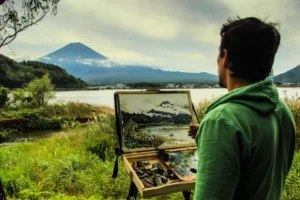
Sakuraco vs Bokksu: March 2022 Japanese Snack Box Comparison
Not such which sakura themed snack box you should get? We complared 2 of the most popular snack boxes out there to help!

Not such which sakura themed snack box you should get? We complared 2 of the most popular snack boxes out there to help!

Sakura is the Japanese word for cherry blossoms, the small, delicate, pink flowers seen during spring. Cherry blossoms are known as the flower of spring, and have become special flowers showing that spring is officially here.

One of the most well-loved souvenirs people often think of from Japan is sake, a traditional alcoholic beverage. However, there is another type of alcohol that has become so popular in Japan that it now sells more than sake. That drink is shochu. To learn more about this special beverage, keep reading!

Okinawa Island, located in the southwest of Japan, has crystal-clear beaches and unique local specialties. Let’s look at some inspiring museums that can help you explore and enjoy all these amazing things, starting with the Eisa Museum!

In Okinawa, the fruit shikuwasa is widely used in various kinds of food and drink. Let’s explore this remarkable Okinawan fruit in more detail!

People often crave cool foods and drinks to beat the heat in summer. Vegetables are always one of the top ingredients and essential in summer cuisine. This season offers a wide variety of delicious and healthy vegetables. Let’s explore some of the most popular Japanese vegetables in summer dishes!

The Noto Peninsula in Ishikawa Prefecture might be the only place in Japan where going wild and being violent is welcomed. That’s because it’s home to the unique and thrilling Abare Festival.

Mount Fuji in Japan is one of the most notable cultural symbols in the world. Rising gracefully to 3,776 meters (12,388 feet), it has inspired poets, pilgrims, and painters for centuries. Artists see Fuji not only as a mountain, but as a sacred form, unchanging yet always different depending on the light, season, or mood.

Agemochi is a deep-fried mochi snack that is crunchy on the outside and full of rich flavor. It differs from fresh mochi but is still made from the same rice base. People of all ages love this tasty treat and is easy to find in shops around Japan.

From the sunny shores of Okinawa to the bright lights of New York City, sisters Natsuko and Maki Akamine prepared for a big moment. On June 20th, the talented pair performed at Carnegie Hall, one of the most famous concert halls in the world.

There’s something special about wearing clothes with meaning and memory behind them. That’s what Tokyo Kimono Shoes is all about. They take authentic vintage kimono (traditional Japanese robe) fabric and turn it into cute sneakers you can wear daily. These shoes are more than just fashion. They carry pieces of Japanese culture, each full of color and history.

Samurai armor was known for its striking designs and workmanship. It served not only as protection, but also as a symbol of the wearer’s strength and artistic taste. This combination of power and beauty has inspired a new generation of artists to revive the aesthetic.

If you’re interested in samurai history and culture, the Soma-Nomaoi festival in Fukushima, Japan, is a must-see! We also discuss the recent groundbreaking change that allows women of all ages to participate fully for the first time.

Looking for a unique way to experience Japanese culture? This verbal comedy show might be just what you need! Traditional storytelling has made people laugh and sometimes cry for centuries. Performed by a single person using only simple props, this performance style turns simple stories into vivid scenes full of life and humor. Today, we will introduce Rakugo, its history, why it remains popular, and where you can watch it.
Join our newsletter and receive tasty news and deals
Thanks! We just sent you an email to confirm your subscription. To finish signing up, please click the confirmation link in the email.
Error